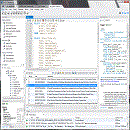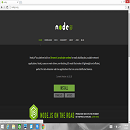One of the best tools to install and manage Python packages is called Pip. Pip has earned its fame by the number of applications using this tool. Used for its capabilities in handling binary packages over the easy_installed packaged manager, Pip enables 3rd party package installations. Though the newest versions of Python come with pip installed as a default, this tutorial will show how to install Pip, check its version, and show some basic commands for its use.

Python is an open-source programming language that allows you to run applications and plugins from a wide variety of 3rd party sources (or even applications you develop yourself) on your server. Python is cross-platform, meaning that you can run it on a number of different operating systems, including Windows Server OS.
Pre-flight Check
Before you can install Pip on your server, you’ll need to confirm that Python is installed.
The simplest way to test for a Python installation on your Windows server is to open a command prompt (click on the Windows icon and type cmd, then click on the command prompt icon). Once a command prompt window opens, type python and press Enter. If Python is installed correctly, you should see output similar to what is shown below:
Python 3.7.0 (v3.7.0:1bf9cc5093, Jun 27 2018, 04:59:51) [MSC v.1914 64 bit (AMD64)] on win32
Type "help", "copyright", "credits" or "license" for more information.
If you receive a message like:
Python is not recognized as an internal or external command, operable program or batch file.
Python is either not installed or the system variable path hasn’t been set. You’ll need to either launch Python from the folder in which it is installed or adjust your system variables to allow Python to be launched from any location. For more information about installing and using Python, see our article on how to install python on windows.
Installing Pip
Once you’ve confirmed that Python is correctly installed, you can proceed with installing Pip.
Download get-pip.py to a folder on your computer.
Open a command prompt and navigate to the folder containing get-pip.py.
Run the following command:
python get-pip.py
Pip is now installed!
You can verify that Pip was installed correctly by opening a command prompt and entering the following command:
pip -V
You should see output similar to the following:
pip 18.0 from c:usersadministratorappdatalocalprogramspythonpython37libsite-packagespip (python 3.7)
Now that Pip is installed and configured, you can begin using it to manage your Python packages. For a brief overview of the available commands and syntax for Pip, open a command prompt and enter:
pip help
All of Liquid Web’s Windows core-managed servers can run Python and our support team can assist with installation and verification if needed. ActiveState Python 2.6.5 can be installed on Plesk Fully Managed servers if desired.


 ZOOM Cloud Meetings 5.5.4 (13142.0301)
6,089
ZOOM Cloud Meetings 5.5.4 (13142.0301)
6,089
 How to Install MySQL
4,623
How to Install MySQL
4,623
 How to Install Node.js® and NPM on Windows
84
How to Install Node.js® and NPM on Windows
84
 Windows Live Messenger 2012 16.4.3505 - 2software.net
2,897
Windows Live Messenger 2012 16.4.3505 - 2software.net
2,897
 Bandicam 3.1.0.1064 - Software video screen free games for PC
3,061
Bandicam 3.1.0.1064 - Software video screen free games for PC
3,061
 PortraitPad for Windows 10 - Application free portraiture
4,001
PortraitPad for Windows 10 - Application free portraiture
4,001
 Free Invoice Template - Free download and software reviews
2,088
Free Invoice Template - Free download and software reviews
2,088
 WebcamMax - Free download and software reviews
3,099
WebcamMax - Free download and software reviews
3,099
 IP Camera Viewer - Free download and software reviews
3,001
IP Camera Viewer - Free download and software reviews
3,001
 Solid Converter PDF to Word 8.0 ( build 18 ) - Convert PDF to Word file from the PC
2,319
Solid Converter PDF to Word 8.0 ( build 18 ) - Convert PDF to Word file from the PC
2,319
 CSM Click 1.8 - The software automatically updates game
2,949
CSM Click 1.8 - The software automatically updates game
2,949
 Estimates F1 1:25 - Software estimation efficiency projects
2,439
Estimates F1 1:25 - Software estimation efficiency projects
2,439
 Delta 8.0 - Software estimation
2,623
Delta 8.0 - Software estimation
2,623
 Cyber Station Manager (CSM) 5.5.1 - Management software engine room
1,064
Cyber Station Manager (CSM) 5.5.1 - Management software engine room
1,064
 3TSoft - Accounting Software Free
2,506
3TSoft - Accounting Software Free
2,506
 Vietnam AccNetiZ Lac - Cheap Accounting Software
2,198
Vietnam AccNetiZ Lac - Cheap Accounting Software
2,198
 Fast Accounting 11 - Accounting Software
2,439
Fast Accounting 11 - Accounting Software
2,439
 MISA SME.NET 2012 R52 - Accounting Software for small and medium enterprises
2,807
MISA SME.NET 2012 R52 - Accounting Software for small and medium enterprises
2,807
 iBHXH - social support network declaration
2,633
iBHXH - social support network declaration
2,633
 Reinforced statistical software TIP - Statistics kinds of rebar, steel
2,296
Reinforced statistical software TIP - Statistics kinds of rebar, steel
2,296
 Google Chrome Free...
166843
Google Chrome Free...
166843
 MathType 6.9a -...
79627
MathType 6.9a -...
79627
 Zalo for PC
29566
Zalo for PC
29566
 Beach Head 2002 -...
25753
Beach Head 2002 -...
25753
 iBackupBot - Free...
22610
iBackupBot - Free...
22610
 AnonymoX 2.0.2 -...
22197
AnonymoX 2.0.2 -...
22197
 Snipping Tool++...
20879
Snipping Tool++...
20879
 Age of Empires 1.0
17061
Age of Empires 1.0
17061
 Realtek AC97 Audio...
16526
Realtek AC97 Audio...
16526
 Citrio...
14567
Citrio...
14567